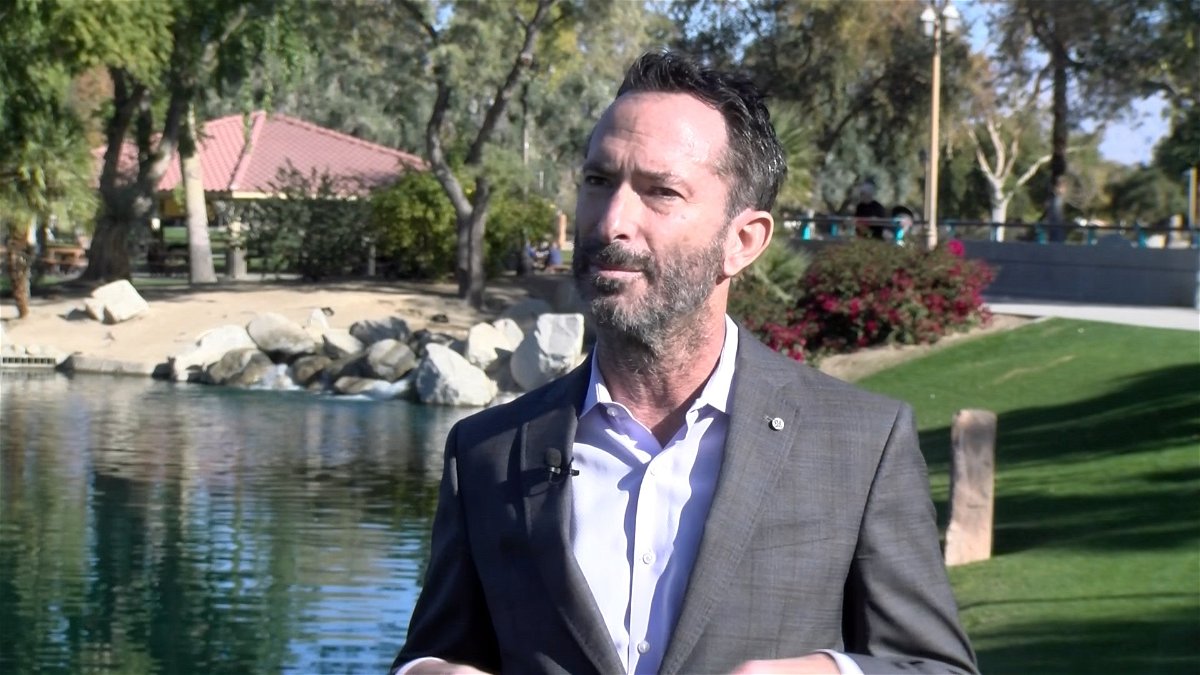Local program is getting homeless people off Coachella Valley streets but hitting roadblocks to helping more
A Coachella Valley effort to remove homeless people from the streets by offering them permanent housing is showing positive results but facing headwinds in its search for affordable homes to keep the program expanding.
High housing costs are a part of California's growing homeless population, and the Coachella Valley Association of Governments is now running into the same problem as so many others in securing housing for people who successfully complete its Housing First program.
Leonard McGensy entered the program last year and has since graduated into his own Cathedral City apartment.
McGensy said, “And this is my place where I’m living now-- being a permanent resident.”

McGensy has lived in an apartment downtown for just over a year now. He's happy to have a healthy supply of food in the pantry, a bike to ride, and a stereo to listen to his favorite music.
“It’s better than having to listen to someone else’s music in their car at the park,” McGensy said referencing Indio’s Doctor Carreon Park. That’s where he used to live in his car.
News Channel 3's Jeff Stahl first spoke to him a year ago in April when he had accepted an offer to get out of that park. He was a new participant in CVAG's Housing First initiative and living in a temporary apartment.
The program is funded by CVAG member cities, the County of Riverside, and local tribes. It works to get a named list of the Coachella Valley’s 200 most chronically homeless people off the streets.
The list, known as the CV 200, names 200 homeless individuals around the valley that have frequent contact with law enforcement, don’t like shelters, or who’ve fallen out of other housing options.
McGensy fit the description at the time.
"I wasn’t taking time to going to do what I was supposed to do for myself,” McGensy said.
He was placed into a temporary apartment where a social worker helped him obtain a state ID card, health insurance, a Social Security card, and supplemental benefits. It was money he’d never claimed while homeless on the streets.
“For one that’s making a change in life, it’s very helpful," McGensy said, adding "They help you as they helped me.”
But now, the same program that helped McGensy off the streets is having a hard time helping others just like him.
CVAG Executive Director Tom Kirk said, “We have an affordable housing problem in the State of California, and we certainly have one in the Coachella Valley.”
Kirk says they simply cannot find enough permanent housing solutions for the people who successfully complete the Housing First program.

“And that's the toughest part about our program for our staff," Kirk said adding, "Well, we know somebody is ready to move into permanent housing, clean up there and move forward with their life and there's not housing there for them.”
CVAG connected 54 CV 200 clients with permanent housing in 2022 along with another 16 non-CV 200 households. Many placements were due to a large number of openings in a Riverside program at St. Michael’s and county vouchers to pay for it.
Still, that 2022 number was less than the year before when 75 CV 200 clients were placed into permanent housing along with another 32 non-CV 200 clients.
In the first quarter of this year, there were 24 permanent housing resolutions. Two people ended up with family or friends, 13 found supportive housing, and nine found subsidized rentals according to a CVAG Housing First update report. Seven others dropped out and went back to the streets.
A growing problem is the soaring cost of rent. The costs often exceed voucher limits so participants have to remain in temporary housing longer or simply chose to go back to the streets not wanting to accept what their vouchers will pay.
Jeff Stahl asked McGensy his thoughts on the dilemma. Jeff said, “What are your thoughts on knowing this program that helped you so much is having a hard time helping others?” McGensy replied, “I feel this is where the government needs to get a game plan on building something of size.”
Kirk agrees with that assessment. “I'm hopeful in 2023 that those promised apartments come online and provide a lot of needed housing in the Coachella Valley,” Kirk said.
Meanwhile, now happily settled in, McGensy looks at pictures of his daughter and family. He’s thinking about moving to Oklahoma to be with them but says the move would cost a lot of money he doesn’t currently have. But he's happy and has no plans to go back to the lifestyle that first led him to the streets of Riverside, then the Coachella Valley for decades of his life.

California has an estimated 171,000 homeless people living on its streets. That number represents 30% of all the homeless people in the U.S.
A recent U.C. San Francisco study suggests many people are living on the streets because apartment rental prices are too high for them to manage and their other living options are few.
Their median household income before being homeless was $960 a month, or for renters on leases $1,400 a month, of which half went to rent.
Find out more about Riverside County's efforts to help people struggling with paying the rent.





